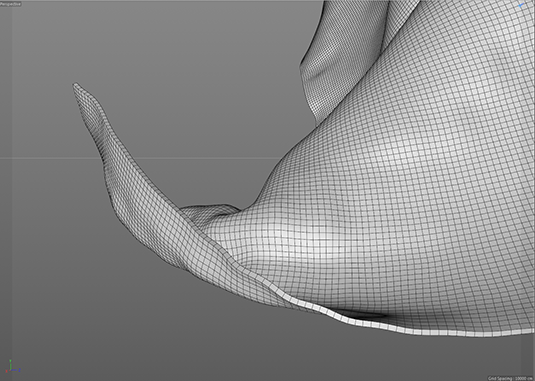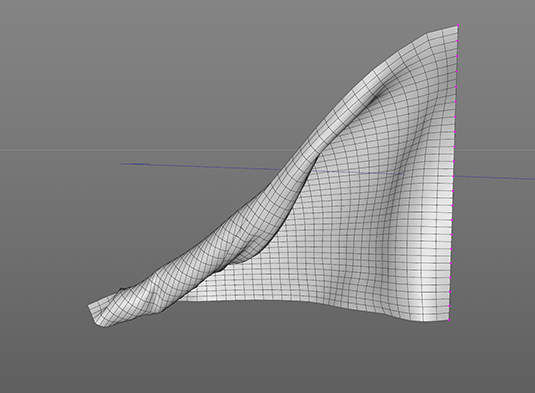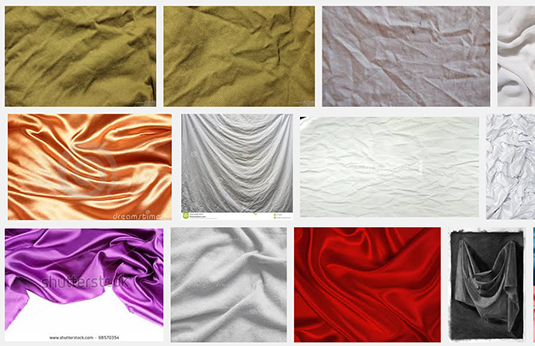Animation basics: Get started with cloth simulations
Learn how to make the most of your cloth dynamics with these pro tips.
We can often tell when a render is CG, rather than a photo, but most of the time we can't always appreciate why we come to that conclusion. In reality it could be a number of reasons, from dodgy lighting, to stretched textures, but there are also tell tale signs that are missing from the scene and softness is an important one.
Hard surfaces are easiest to recreate in 3D, so that's where most people start. However, if you add a touch of cloth in the form of soft furnishings, curtains or the like then you will add something special to your render.
01. Polygons vs speed

The main thing to keep in mind when working with cloth dynamics is your polygon count. You'll need to find the best balance between the detail you need and the speed at which you can work.
Some of the other tips here will help, but use as few polygons as you can to achieve the results you need and your simulation times will decrease. You'll need enough geometry to for cloth to hang cleanly over edges without breaking or looking unnatural.
02. Thickness

You can extrude your geometry pre- or post-simulation using any of your normal polygon tools, but if you have the option to use something like Cinema 4D's Cloth Surface object then do. It's a switchable way of both smooth subdividing and thickening your cloth, that doesn't intefere with the simulation, keeping you quick and adaptable.
03. Wind

A large part of the control you have over your cloth comes from physically based attributes such as gravity and wind but don't let this stop you from being creative. You can go in and change things to suit your needs.
Try making gravity do something other than the standard to lighten your cloth without needing lots of lift or drag. Most apps let you adapt the gravity for cloth separately from the scenes global gravity.
Daily design news, reviews, how-tos and more, as picked by the editors.
04. Cloth or soft body?

If you're working on something like a cushion or a balloon it might be better to use soft body dynamics, rather than cloth. Although it might be more accurate to use internal pressure, seams and so on, bullet dynamics (available in most apps) has a great soft body system that will give you usable results, often much faster.
05. Reference is king

Simulations have come a long way over the last few years and it's possible to create realistic cloth in just a few minutes. But you really need to know what to expect to maintain believability. With that in mind try to get photo and or video references of the materials you are simulating so you can be confident in your results.
Words: Rob Redman
Rob Redman is the creative director at Pariah Studios, a boutique VFX and animation studio, working for clients from The Who to Katy Perry.
Like this? Read these...
- Animation basics: 5 tips for getting your character to walk
- Download free textures: high resolution and ready to use now
- Free graphic design software available to you right now!

The Creative Bloq team is made up of a group of art and design enthusiasts, and has changed and evolved since Creative Bloq began back in 2012. The current website team consists of eight full-time members of staff: Editor Georgia Coggan, Deputy Editor Rosie Hilder, Ecommerce Editor Beren Neale, Senior News Editor Daniel Piper, Editor, Digital Art and 3D Ian Dean, Tech Reviews Editor Erlingur Einarsson, Ecommerce Writer Beth Nicholls and Staff Writer Natalie Fear, as well as a roster of freelancers from around the world. The ImagineFX magazine team also pitch in, ensuring that content from leading digital art publication ImagineFX is represented on Creative Bloq.
